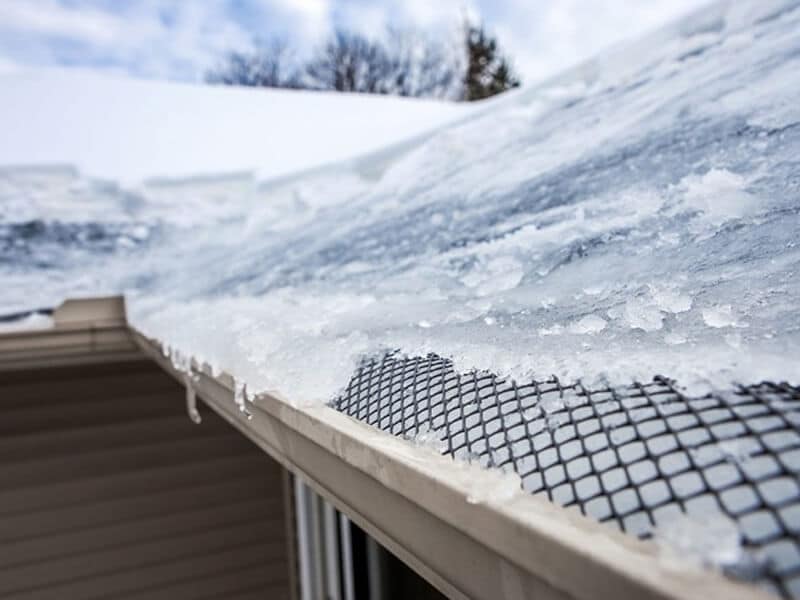
What is an Ice Dam, How Does it Form and What Damage Does it Cause?
Aside from creating slippery roads and driveways, changing temperatures and precipitation cycles can also wreak havoc on your home’s roofing system.
In the Midwest, we know that rapidly changing temperatures is the norm — often called the freeze and thaw cycle. Rain turns to snow and back to rain in the same week — and sometimes even in the same day.
Because heat rises, if your attic is held at a temperature above freezing, it may cause the snow sitting on your roof to melt. The water will then flow toward your home’s gutter system and accumulate at those edges and ultimately, re-freeze. This will create an actual dam — accurately referred to as an ‘ice dam.’ This dam will then prevent water from running off your roof as it typically should. The blockage caused by an ice dam can potentially cause moisture to get caught underneath the shingles on your roof which could damage the roofing system – and because it is winter, those damages are challenging to fix due to the inclement weather. In more serious cases, the moisture trapped under the shingles could even leak down into the attic causing dreaded water damage to your ceiling, walls and insulation.
At first glance, these ice dams may disguise themselves as gorgeous and sometimes delicate-appearing icicles. Think winter wonderland! However, these ice dams are actually bands of dangerous heavyweight ice that can place excessive pressure on your gutter system — as well as other components of your home.
And, if the ice dam is big enough it could even break and fall off the roof taking shingles and other parts of your roof with it. And as you can imagine, falling chunks of ice can be dangerous for you, your family, pets and vehicles, as well as other parts of your home. This may cause your gutters to become loose or pull apart entirely from your home.
How Can I Prevent This?
Controlling the heat loss within your home is the best way to prevent ice dams. Keeping your roof at a lower temperature is one way to prevent ice dams, however this was be quite tricky during the winter months when staying warm and cozy is usually the goal. To prevent any heat loss through your attic it is important to plug or fill any holes leading to your attic from your home and check on the level of insulation you have. Anything less than 8” of insulation will be less-effective at keeping the heat from escaping your home. Having soffits or vents installed into your roofing system can allow for the warmer air to escape while also allowing cooler air to enter into your attic space – this will help keep your roof at a colder temperature protecting it from ice dams!
Ensuring that you promptly remove snow from your roof is another way to keep ice dams at bay. Using a specialized roof rake or broom to push the snow off frequently during heavy snow days or after the snow fall ends can be helpful. However, be cautious not to damage any roofing materials when attempting to remove snow.
Winterizing your roof before these significant weather changes occur is ideal, so be sure to take a look at our blog post on how you can be prepared to winterize your roof!
What Can I Do Should I Find an Ice Dam?
The likelihood of experiencing ice dams should you live in an area with cold and snowy winters is fairly high, and while there are many tips and tricks to be found on how to handle an ice dam, maneuvering a roofing system during the winter months can be tricky for most homeowners.
Contacting a roofing professional who is able to provide a no cost, no obligation inspection of the ice dam and your roofing system is ideal. This way you avoid causing unnecessary damage to your roofing system. Having an expert check for current damages and/or potential damages that can be created is important. A professional can help you navigate the best form of safe removal as well as ways to ensure you’re less likely to encounter future ice dams. Winter conditions can also be tricky when it comes to hopping on roofs — so it’s best to leave it to the experts!


